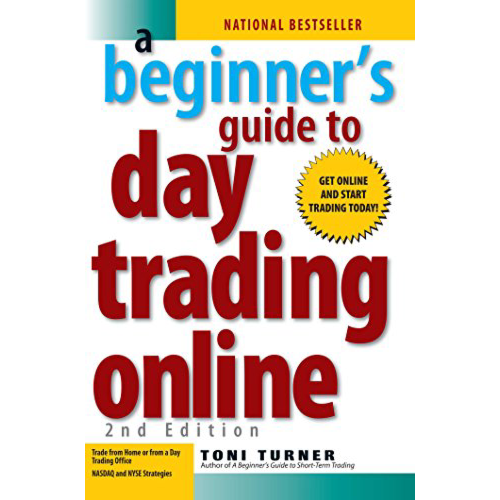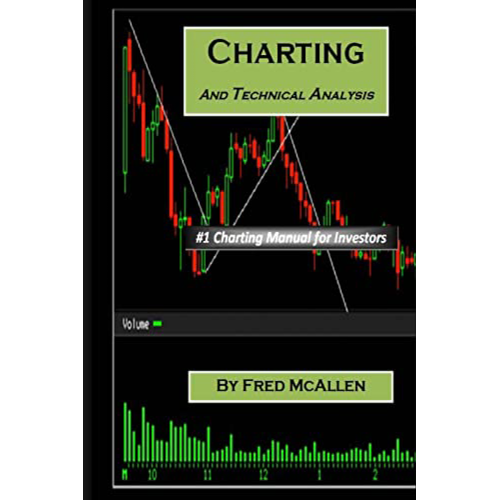If you're interested in day trading online, reading books from experienced traders is one of the best ways to learn the ins and outs of the financial markets. Day trading books can provide valuable insight on varied topics such as strategy selection, money management, technical analysis, risk management, and more.
Additionally, these resources offer a great opportunity for readers to gain knowledge about the market's trading psychology without having to invest huge sums of money.
Day trading books cover a wide range of topics that are related to trading stocks and other financial instruments. Popular topics include investing basics, indicators, and strategies for determining entry and exit points when entering trades, techniques for minimizing risk while maximizing profits, understanding market psychology, and the importance of proper money management skills. To help traders make sense of these complex topics, successful traders share their tips and experiences in books written specifically for day traders.
In addition to general knowledge about day trading concepts, many day trading books also discuss specific strategies that have proven successful in actual trades.
Momentum-based strategies and swing trading methods are two popular techniques used by day traders to maximize profits. Momentum-based strategies involve attempting to identify trends that may indicate a possible future price movement, then using these trends as a guide for initiating entry and exit points for trades.
Swing trading is a trading strategy that seeks to capture short-term market moves and capitalize on price fluctuations. This method involves taking positions in stocks, commodities, currencies, or other types of financial instruments with the intention to buy low and sell high within a short period of time. Swing traders typically hold their trades for several days to several weeks
By studying these approaches thoroughly, aspiring traders can gain an understanding of which strategies they should be incorporating into their own portfolios with confidence to manage risk through in-depth technical analysis, and these simple strategies will provide the disciplined trader with a trading career.
Overall, day trading books provide newbies with a wealth of information that can be applied directly to their own practice. Experienced traders can benefit from these titles as well by gaining new perspectives on existing strategies or learning about alternative approaches that could be more profitable under certain conditions. No matter what level of trader you may be, there is sure to be a book out there for you that will help you become a better investor!
How We Choose
We've read the most popular day trading books to find out which are worth your time. Discover the best strategies for making money in today's market, as well as tips on how to avoid common mistakes that new traders often make. Read on to discover the best day trading books for you!
How to Day Trade: A Detailed Guide to Day Trading Strategies, Risk Management, and Trader Psychology

How to Day Trade: A Detailed Guide to Day Trading Strategies, Risk Management, and Trader Psychology
The day trading course is a comprehensive guide that teaches you how to trade successfully from the beginner level up to the advanced. This book focuses on making money from the markets and it does this by teaching you three simple rules for success, which are:
1) Find predictable volatility.
2) Manage your risk.
3) Follow proven strategies.
With these rules in mind, the rest of the strategies will fall into place easily and add years of profitable trading to your career. The author offers numerous real-life examples throughout the book so you can see what he looks like when he's actually trading and giving his tips, which makes this an invaluable resource for any trader at any level looking to improve their skills or learn more about day trading in general. As such we think this is one of the best books available on day trading and if you're looking to start a successful career as a trader then it should be part of your reading list.
A Beginner's Guide to Day Trading Online (2nd edition)
The second edition of Toni Turner's bestselling guide is a vast improvement over the first. For one thing, it's now based on updated market data—which makes all the difference in a book about day trading.
The author's trademark is her accessible writing style and clear explanations of complex financial concepts such as decimalization and precision entries. She also provides helpful tips for avoiding common mistakes made by new traders, such as setting stop-loss points too close to your entry price or clicking on trades that get executed automatically.
A Beginner's Guide to Day Trading Online will prepare you well for day trading online if you're new to the world of high-frequency trading (HFT). But it'll also help seasoned pro traders improve their overall performance., If you want to make money using this strategy, stick with it long enough to master each lesson in this book — and then move on to more advanced books like The Trader's Manifesto: How To Use Your Mental Game To Trade Profitably by Mark Douglas and The Trader: How Geniuses Work In Stock Market by Joe Granville.
How to Day Trade for a Living: A Beginner’s Guide to Trading Tools and Tactics, Money Management, Discipline, and Trading Psychology

How to Day Trade for a Living: A Beginner’s Guide to Trading Tools and Tactics, Money Management, Discipline, and Trading Psychology
The ABCD Pattern Trading strategy is one of the most popular day trading strategies, and Andrew Aziz explains why in his book. He starts by explaining what a pattern is, how they form, and how to identify them on charts.
He then walks you through the steps he took to develop this strategy, which involves using moving averages and support/resistance lines as well as various other indicators. He also shows you how he entered and exited trades using different types of orders.
The main drawback of this strategy is that it relies heavily on technical analysis for its success, so if you're not comfortable with that kind of thing then this may not be the best option for you. However, it's still an effective way to trade stocks successfully every day. The Bull Flag Momentum Trading Strategy uses a similar approach to the ABCD Pattern Day Trading Strategy but instead focuses on momentum signals rather than technical ones. It works by identifying stocks that have recently risen in price and looking at whether they continue their upward momentum or fall over time – which represents ‘selling pressure.' You can find more details about this strategy in Andrew Aziz's book.
This approach has been shown to work extremely well over time based on real-world data points – although it does require some patience to get started with it because momentum isn't something that tends to happen overnight. From Wall Street, The Top Reversal Trading Strategy is another common trading approach that uses moving averages alongside other indicators such as RSI (Relative Strength Indicator) or Bollinger Bands for entry signals into trades. This approach works best when combined with a stop-loss order; otherwise, there's a risk of losing part or all of your investment if a stock drops below your entry point.
Trading in the Zone: Master the Market with Confidence, Discipline, and a Winning Attitude

Trading in the Zone: Master the Market with Confidence, Discipline, and a Winning Attitude
The book that started it all, and still sets the bar high. Douglas has a way of cutting to the chase that makes his books easy to read and understand. He uses plain English instead of jargon-laden finance speak, which helps him explain complicated subjects in an accessible way.
Douglas starts by explaining how markets work, and why they can't be easily understood using conventional theories like rational decision-making or efficient markets. His explanation is built on his years of experience as a trader and market analyst, which gives his writing credibility.
This is an introductory book aimed at absolute beginners who want to learn about trading from scratch - you don't need any previous knowledge or experience to get something out of it. It covers basic terminology such as indicators and candlestick charts before going into more advanced topics like volume analysis, trend-following strategies, and spread betting. If you know nothing about trading but are interested in what drives prices up or down then this is the ultimate introduction for you.
Douglas explains how markets work using simple concepts that anyone can understand; he also shows how these principles have been exploited by traders over time - without them knowing it! He explains some fundamental ideas behind price movement that are often misunderstood by investors seeking quick returns from equities trading; yet these same principles apply across asset classes like futures contracts too – often without us even realizing it. In essence, he teaches traders not only what drives prices but also how to exploit those movements through technical analysis. This is a must-read for anyone looking to make money from investing in stocks, futures contracts, or other financial products.
While The Market Cycle describes itself as "The most important investment book ever written," I'd argue it's also one of the best investing books available today - no matter your level of experience with investing. That's because this book doesn't just tell you what happens during a bull market (or bear market), but why those periods occur in the first place -- giving you better insight into when certain investments will perform well (and when they'll fall flat on their face).
By applying Douglas' lessons learned while studying cycles within the stock market (as well as other economic factors) over decades, readers can find ways to potentially beat the market -- even if they're completely new to investing altogether... This means The Market Cycle could literally help save your life savings from being lost forever., Here's what we liked best about this super helpful guide: Douglas does an excellent job at taking readers back through history so they fully understand why different times were considered good for various investments/markets/asset classes/etc... along with how fluctuations throughout history affect each cycle currently occurring within our current economy today (which was no small feat considering the number of variables involved).
Though The Market Cycle is primarily geared towards helping readers navigate through current trends within equities (stocks), there are plenty of examples given throughout where readers can see these same patterns repeat themselves within commodities, bonds, etc... though admittedly not nearly enough examples were provided specifically regarding cryptocurrencies. Regardless though, having prior knowledge regarding these cycles allows readers more freedom in finding safe havens should specific assets begin rolling over as suggested by Douglas himself during his own research period spanning several decades. As opposed to blindly throwing money at every single new coin hoping it pays off long term due simply due wanting 'that next big thing'.
From start finish, this book helped give us much-needed direction when reading between all types of news sources nowadays so we know exactly where information comes from versus hearsay rather than pure speculation... This ultimately allowed us better insights into understanding whether certain developments were likely true versus fabricated by someone trying to hype something up purely for profit rather than actual fact... Of course, there are many reasons why The Market Cycle works perfectly for our needs here at Elite Daily since we've made it our mission over time to help bring clarity and discernment whenever possible whenever an article might otherwise confuse or overwhelm our audience, particularly around cryptocurrency related stories. But regardless whether you're looking for guidance on buying stocks, researching historical trends, learning specific tools & techniques used by top traders, or just want some solid advice on navigating markets overall then THIS IS THE BOOK FOR YOU!! Bottom line? Whether you're brand new to investing or already have decades' worth of experience – whether it stocks, bonds, etc… chances are whatever asset class(es) fit your personal goals & preferences right now – based on recent performance & future projections – may very well be found inside The Market Cycle! And while we'd love nothing more than everyone to take advantage while reading this helpful guide before jumping headfirst into anything else especially once perusing past articles covering cryptocurrency related news - chances are if everything plays out according like Dougie predicts things will play out then *our* lives would definitely change forever along with countless others depending upon their own individual choices.* So until then? Read this great piece first!*, $20+ gets you access via Amazon Prime Video so go ahead and snag yourself a copy now!!
Charting and Technical Analysis
Technical analysis is a form of market analysis that uses charts to predict future price movements. The basis for technical analysis is the assumption that markets are driven by rational actors, who use data and information to make well-informed decisions.
In this book, Fred McAllen explains the basics of technical analysis and shows you how it can be used in the stock market to help you understand what drives the market and when an investment will rise or fall in value. McAllen starts with an introduction to charting before moving on to explain why you should study charts closely and how they work. He then looks at different types of charts, including candlestick charts, line charts, bar graphs, OHLC (open/high/low/close) charts, vertical line graphs, and more.
He also covers fundamental data such as earnings per share numbers as well as volume numbers from several exchanges around the world. He describes some useful tools such as moving averages – which show where security has been over time – Bollinger Bands – which show volatility levels – relative strength index (RSI) indicator – which indicates if price momentum is increasing or decreasing – and MACD histogram indicator - which compares two lines side by side showing where there have been periods of higher highs or lower lows suggesting a trend is forming.
McAllen then discusses various technical indicators such as the RSI divergence indicator - which compares RSI with itself indicating whether prices are overbought or undervalued – the Fibonacci retracement tool - which reveals areas where recent price action has taken support after previous resistance - Elliott Waves - which he says predicts when waves will form based on Fibonacci ratios - Stochastic Oscillator Indicator (SOI) -which measures investor optimism about the future direction of prices going forward based on changes in historical statistics from past trading sessions - Moving Average Convergence Divergence (MACD) histogram tool - which compares two lines together showing when there have been periods of higher highs or lower lows suggesting a trend is forming., author Fred McAllen gives readers everything they need to know about using basic charting tools effectively so they can learn how to read them clearly without getting lost in too much jargon.. If you want to understand what drives markets while predicting their movement toward greater stability then this book will teach you all you need to know about investing successfully through technical analysis., If you're new to investing but want something accessible that teaches fundamentals alongside practical advice for using charts effectively then 'Technical Analysis For Dummies' could provide exactly what you're looking for., ---> Technical Analysis Explained: The Ultimate Beginner's Guide offers clear explanations for every type of chart along with helpful tips like learning when not enough volume occurs during trading hours prior to a breakout move into new territory. It also teaches readers how other indicators relate back to these basic concepts like Fibonacci retracements and MACD signals among others-- helping investors become better educated on markets than ever before.
Though it doesn't cover mutual funds specifically, readers will still find plenty here that helps them invest more safely with fewer risks thanks to its thorough explanation of common terms like Bollinger Bands, Relative Strength Indexes, and Stochastic oscillators among others.---> The bottom line here? This book offers beginners useful insights into trading stocks without having any experience whatsoever; further demonstrating its place among our top five best beginner's books lists overall. Whether your goal is making money quickly off the bat by buying low-priced stocks or slowly growing an investment portfolio over time through smart investment choices instead, Technical Analysis Explained: The Ultimate Beginner's Guide helps get your feet wet without drowning first!
Best Day Trading Books FAQs
How Much Can I Make Day Trading?
There is no definitive answer to this question, as it depends on a variety of factors, including how much capital you have and how long you're willing to sit in front of your computer screen. Ideally, you want to be able to make about $1 for every minute that you're actively trading – so if you can pull off a trade in 15 minutes or less, then that's considered a pretty good haul. Of course, the reality is that most trades take longer than 15 minutes; plus if you're sitting at the same computer all day trading, chances are other traders will catch on quickly (especially when they see your profits) and start buying up the stock ahead of your anticipated purchase.
Still, even with these caveats in mind, it's still possible to do well with day trading. The vast majority of professional day traders we talked to seemed satisfied with their returns over time as long as they were careful not to overextend themselves by taking on too much risk. For example, one trader we spoke with said he made between $80-$100K per year consistently over the last few years while another claimed he had once amassed annual profits north of seven figures but said he couldn't replicate those results consistently since then due to market conditions and his own impulsive decisions.
Do I Need A License To Day Trade?
You don't need a license to day trade, but you do need to be registered with the stock exchange that you're trading on. That means you'll have to complete some paperwork and submit it alongside an application fee before being approved as a trader. Different exchanges have different processes, so check directly with your chosen stock market first if this is something that interests you.
Some brokers also offer paper trading accounts, which let you simulate real-world trades without paying any fees or risking your own money. These are great for beginners who want to test their strategies without spending their life savings in the process.
Where Can I Day Trade?
To day trade successfully, you need to have a solid understanding of the basic trading concepts and principles, including market psychology and risk management. While many online brokers offer educational resources on these topics, it's also helpful to enroll in a live trading class or take an online course that can help bring these ideas to life.
Once you're familiar with the basics of day trading, it's time to put your knowledge into practice by opening a demo account and practicing stock trading with fake money while logging your decisions. You'll make mistakes along the way, but this is how you'll learn what strategies work best for you and which ones don't without having to lose money.
The final step before diving into real-money trades is to choose an online broker that offers high levels of customer satisfaction combined with low trade costs – ideally in the form of commission-free ETFs – so you're well positioned from the start.
Is Day Trading Safe?
Bitcoin is a digital currency, sometimes referred to as a cryptocurrency, best thought of as internet money. You store it in an online account called a wallet, and then you can either keep it there or trade it for other currencies on a platform called an exchange. The price of bitcoin goes up and down, much like any other currency. But unlike fiat currencies (ie dollars), bitcoins are entirely digital and don't exist in physical form.
This means that you don't need to put any money into bitcoin to get started day trading with it. If the price rises high enough for you to sell your coins for a profit then great; if not, then you can just move on to the next trade without losing any cash. That's one reason why many people argue that bitcoin is less risky than traditional investments like stocks or gold.
Conclusion
Day trading can be a lucrative venture if done right. With the right strategies and risk management, traders have the potential to make significant profits over time. By understanding market psychology and leveraging digital resources such as online brokers, demo accounts, and educational courses, you'll give yourself an edge when it comes to day trading success.
While there is always some inherent risk in any type of investment or trade, bitcoin offers a unique opportunity for those looking to get started without investing their own money first.
A successful day trader has a powerful day trading strategy, whether you decide to go with bitcoin or another asset class altogether, do your research before diving into day trading so that you're well-informed about what's involved and ready for whatever may come next.










